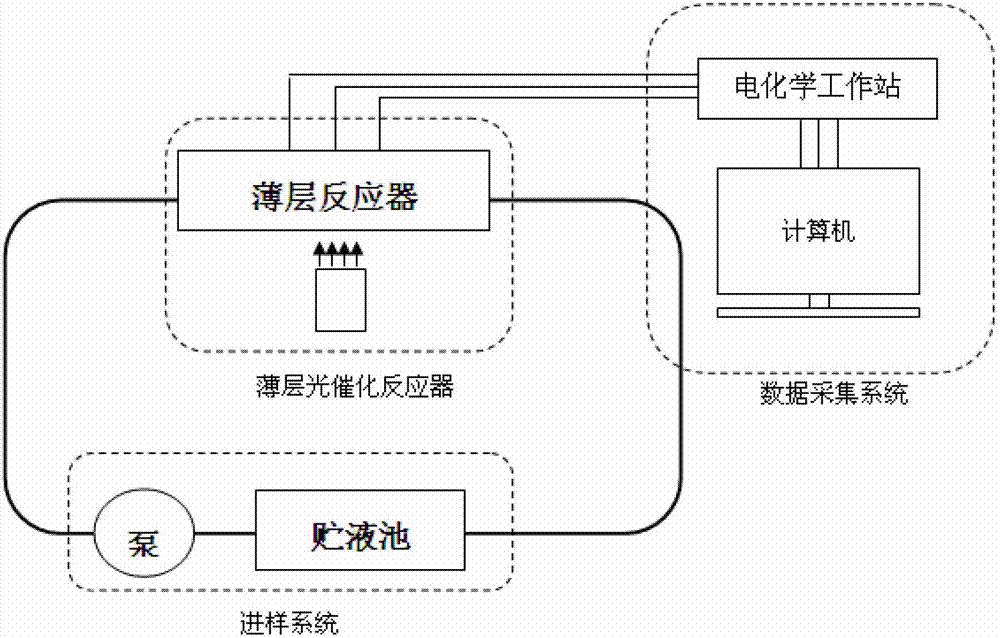Circulating-type water chemical oxygen demand detection photoelectrochemical sensor
A chemical oxygen demand, photoelectrochemical technology, applied in the fields of nanomaterials, environmental analysis and sensors, can solve the problems of slow speed, multi-corrosive and toxic substances, low sensitivity, etc., achieve high sensitivity, avoid photocurrent response error, volume constant effect
- Summary
- Abstract
- Description
- Claims
- Application Information
AI Technical Summary
Problems solved by technology
Method used
Image
Examples
Embodiment 1
[0034] TiO 2 The nanotube array was prepared by anodic oxidation method, the electrolyte was ethylene glycol solution containing 0.3mol / L HF, the voltage was 100V, and the time was 6h. Oxidized TiO2 The nanotube array is crystallized by heat treatment at 500° C. for 2 hours.
[0035] Connect the various parts of the photoelectrochemical sensor as shown in the attached figure, set the flow rate of the peristaltic pump to 10mL / min, apply a bias voltage of 0.2V in the constant potential mode of the electrochemical workstation, and set the power of the ultraviolet light source to 10% (120mW / cm 2 ), the support solution is 0.05mol / L phosphate buffer (Na 2 HPO 4 and NaH 2 PO 4 mix, pH 7).
[0036] Using photoelectrochemical sensor for glucose detection, the detection sensitivity is 66.6μA / mM (COD0.3469uA / mgL -1 ), the limit of detection is 0.0089mM (COD 1.709mgL -1 ).
Embodiment 2
[0038] The implementation method of this embodiment is the same as that of Embodiment 1, except that the bias voltage applied in the potentiostatic mode of the electrochemical workstation is 0.4V.
[0039] The detection of glucose by photoelectrochemical sensor has a detection sensitivity of 64.2μA / mM (COD0.3344uA / mgL -1 ), the limit of detection is 0.0093mM (COD 1.776mgL -1 ).
Embodiment 3
[0041] The implementation method of this embodiment is the same as that of Embodiment 1, except that the bias voltage applied in the potentiostatic mode of the electrochemical workstation is 0.6V.
[0042] Using photoelectrochemical sensor to detect glucose, the detection sensitivity is 48.4μA / mM (COD0.2521uA / mgL -1 ), the limit of detection is 0.0123mM (COD 2.356mgL -1 ).
PUM
| Property | Measurement | Unit |
|---|---|---|
| wavelength | aaaaa | aaaaa |
Abstract
Description
Claims
Application Information
 Login to View More
Login to View More - R&D
- Intellectual Property
- Life Sciences
- Materials
- Tech Scout
- Unparalleled Data Quality
- Higher Quality Content
- 60% Fewer Hallucinations
Browse by: Latest US Patents, China's latest patents, Technical Efficacy Thesaurus, Application Domain, Technology Topic, Popular Technical Reports.
© 2025 PatSnap. All rights reserved.Legal|Privacy policy|Modern Slavery Act Transparency Statement|Sitemap|About US| Contact US: help@patsnap.com


